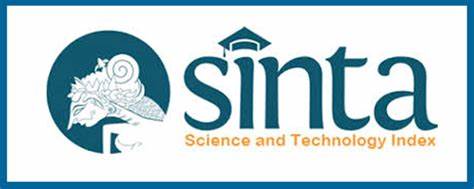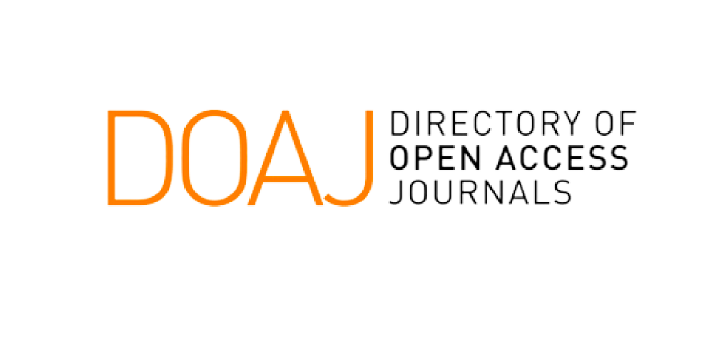Online Submissions
Already have a Username/Password for Waskita: Jurnal Pendidikan Nilai dan Pembangunan Karakter?
Go to Login
Need a Username/Password?
Go to Registration
Registration and login are required to submit items online and to check the status of current submissions.
Author Guidelines
- The paper must be an original manuscript and shows the novelty either from conceptual or research findings on value education and character building. The paper should not yet have been published or be under review in other publications.
- The paper is written in Bahasa Indonesia and approximately between 4000 and 7000 words.
- The body’s paper must be typed in A4, 12-point Times New Roman, spaced 1,5, and the margin’s size is left 3 cm; right, top, and bottom are 2 cm.
- The writing system consists of:
a) Title
The paper title should be written with the capital letters, 14-point Times New Roman, and be bolded. For the title is written in Indonesian should be no more than 16 words and for the English title should be written no more than 16 words.
b) Name of the author
The name of the author is written without any academic degree, followed by the name of author’s institution. All detail located under the tittle and must be typed in 12-point Times New Roman, spaced 1,0. In case the paper is written by a team, the editor is only contact with the corresponding author or the first mentioned. The main author must include his/her correspondence email address.
c) Abstract with keywords
The abstract is written in Bahasa Indonesia version and English version. The abstract started by the tittle of paper on Bahasa Indonesia’s version and English’s version. should have around 125-200 words, and typed in 10-point Times New Roman, 1 spaced. The keywords should have 3-5 words, and typed in 10-point Times New Roman, 1 spaced, and be bolded. The abstract, at least, must contain the aim, methods, and result on the research.
d) Introduction
The introduction should contain (sequentially) the general background and research question or hypothesis if there is literature review, it can be included in this chapter. The study objective should be written at the end of the introduction. The length of this part are 750-1000 words.
e) Methods
The research method contains an explanation of the methods used by researchers to produce findings. This section contains a description of the research procedures and steps that are specific to the topic being studied. The length of the manuscript in the content section maximum are 500 words.
f) Results and Discussion
The results section of this study contains exposure to the results of data analysis. Describe the research results according to the objectives/problems studied and the procedures described in the methods section. The results of data analysis presented in the form of patterns, characteristics, statistical analysis, hypothesis testing, and others according to the characteristics of the study. Include tables, diagrams, pictures, or quotes as needed so that the visualization of research results is easy for readers to understand. The discussion contains the meaning of the research results that have been described.
The discussion should show the novelty and significant findings of the research conducted.
Use the latest research results from reputable journals to discuss research findings. The length of exposure to the results of research and discussion are between 2000-3000 words.
g) Conclusion
Provide recommendations for follow-up research results and further research as needed. If suggestions are needed, write them down specifically. The length of the conclusion are between 400-500 words.
h) References
All references cited in the text of the article should be written in the bibliography section. It should include references obtained from primary sources (consisting of scientific journals amounting to 80% of the entire bibliography) that have been published in the last 10 (ten) years. The remaining 20% may include research articles or research reports (thesis, books, and other relevant publications. All references mentioned should be written down in reference using APA Style and arranged from A to Z. The references must be typed in 10-point Times New Roman, spaced 1,0.
- The manuscript is to be submitted directly to the https://waskita.ub.ac.id/ by creating user account as an author.
- Tables and figures must have titles and have clear number and sources, and be typed in single space. The table model is created with only three full horizontal lines. Avoid using “table above”, “table below”, “next table”, but instead point directly to the table number.
- Check each referred article for accuracy and make sure every quoted work in the article is written in References. Works that are not cited but mentioned in References will be committed by the editor.
Submission Preparation Checklist
As part of the submission process, authors are required to check off their submission's compliance with all of the following items, and submissions may be returned to authors that do not adhere to these guidelines.
- The submission has not been previously published, nor is it before another journal for consideration (or an explanation has been provided in Comments to the Editor).
- The submission file is in OpenOffice, Microsoft Word, RTF, or WordPerfect document file format.
- Where available, URLs for the references have been provided.
- The text is single-spaced; uses a 12-point font; employs italics, rather than underlining (except with URL addresses); and all illustrations, figures, and tables are placed within the text at the appropriate points, rather than at the end.
- The text adheres to the stylistic and bibliographic requirements outlined in the Author Guidelines, which is found in About the Journal.
- If submitting to a peer-reviewed section of the journal, the instructions in Ensuring a Blind Review have been followed.
Copyright Notice

This journal embed or display simple machine-readable CC licensing information. This journal allow reuse and remixing of content in accordance with a Creative Commons license, Creative Commons Attribution 4.0 International License (CC BY)
Authors who publish with this journal agree to the following terms:
- Authors retain copyright and grant the journal right of first publication with the work simultaneously licensed under a Creative Commons Attribution 4.0 International License (CC BY that allows others to share the work with an acknowledgment of the work's authorship and initial publication in this journal.
- Authors are able to enter into separate, additional contractual arrangements for the non-exclusive distribution of the journal's published version of the work (e.g., post it to an institutional repository or publish it in a book), with an acknowledgement of its initial publication in this journal.
- Authors are permitted and encouraged to post their work online (e.g., in institutional repositories or on their website) prior to and during the submission process, as it can lead to productive exchanges, as well as earlier and greater citation of published work (See The Effect of Open Access).
Privacy Statement
The names and email addresses entered in this journal site will be used exclusively for the stated purposes of this journal and will not be made available for any other purpose or to any other party.
Author Fees
This journal charges the following author fees.
Article Submission: 0.00 (IDR)
Authors are required to pay an Article Submission Fee as part of the submission process to contribute to review costs.
Fast-Track Review: 0.00 (IDR)
With the payment of this fee, the review, editorial decision, and author notification on this manuscript is guaranteed to take place within 4 weeks.
Article Publication: 0.00 (IDR)
If this paper is accepted for publication, you will be asked to pay an Article Publication Fee to cover publications costs.
If you do not have funds to pay such fees, you will have an opportunity to waive each fee. We do not want fees to prevent the publication of worthy work.









